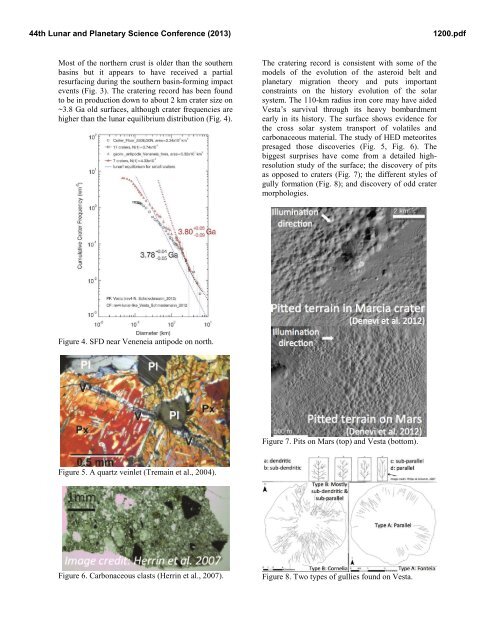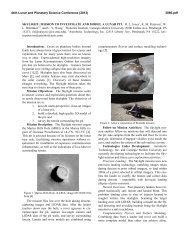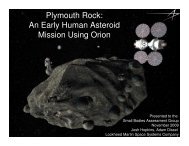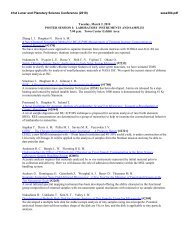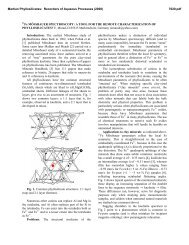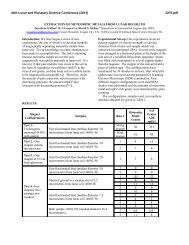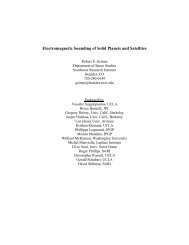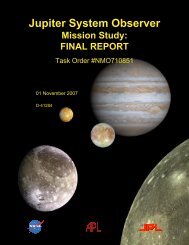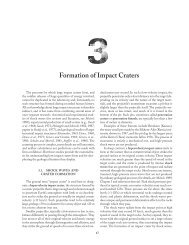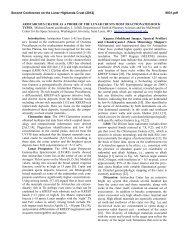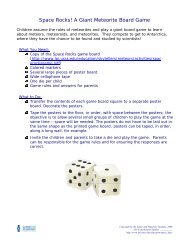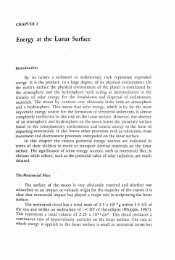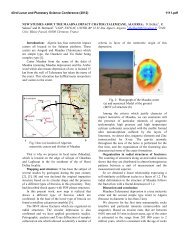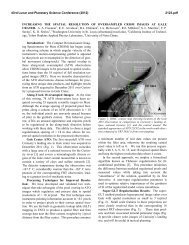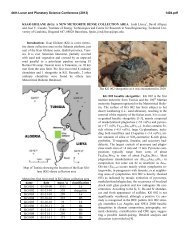1200 - Lunar and Planetary Institute
1200 - Lunar and Planetary Institute
1200 - Lunar and Planetary Institute
You also want an ePaper? Increase the reach of your titles
YUMPU automatically turns print PDFs into web optimized ePapers that Google loves.
44th <strong>Lunar</strong> <strong>and</strong> <strong>Planetary</strong> Science Conference (2013)<br />
<strong>1200</strong>.pdf<br />
Most of the northern crust is older than the southern<br />
basins but it appears to have received a partial<br />
resurfacing during the southern basin-forming impact<br />
events (Fig. 3). The cratering record has been found<br />
to be in production down to about 2 km crater size on<br />
~3.8 Ga old surfaces, although crater frequencies are<br />
higher than the lunar equilibrium distribution (Fig. 4).<br />
The cratering record is consistent with some of the<br />
models of the evolution of the asteroid belt <strong>and</strong><br />
planetary migration theory <strong>and</strong> puts important<br />
constraints on the history evolution of the solar<br />
system. The 110-km radius iron core may have aided<br />
Vesta’s survival through its heavy bombardment<br />
early in its history. The surface shows evidence for<br />
the cross solar system transport of volatiles <strong>and</strong><br />
carbonaceous material. The study of HED meteorites<br />
presaged those discoveries (Fig. 5, Fig. 6). The<br />
biggest surprises have come from a detailed highresolution<br />
study of the surface; the discovery of pits<br />
as opposed to craters (Fig. 7); the different styles of<br />
gully formation (Fig. 8); <strong>and</strong> discovery of odd crater<br />
morphologies.<br />
Figure 4. SFD near Veneneia antipode on north.<br />
Figure 7. Pits on Mars (top) <strong>and</strong> Vesta (bottom).<br />
Figure 5. A quartz veinlet (Tremain et al., 2004).<br />
Figure 6. Carbonaceous clasts (Herrin et al., 2007).<br />
Figure 8. Two types of gullies found on Vesta.


